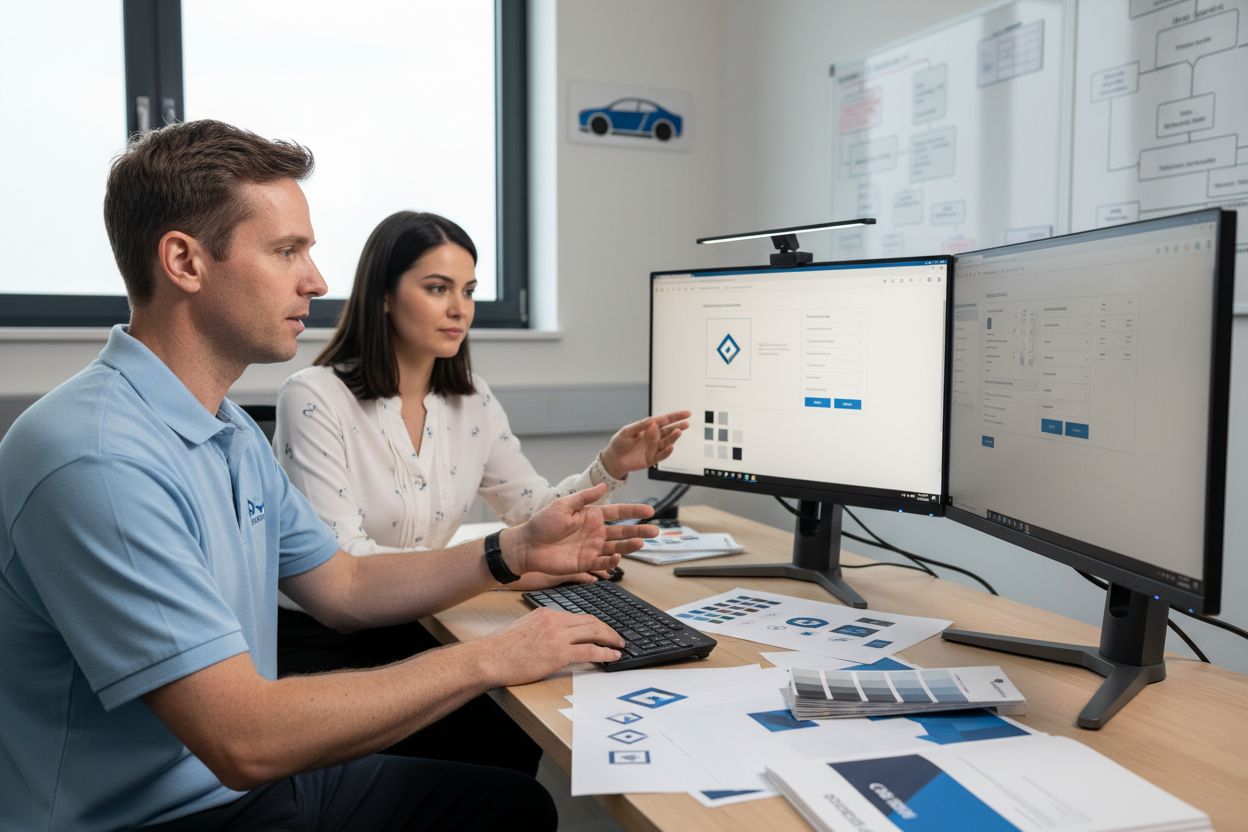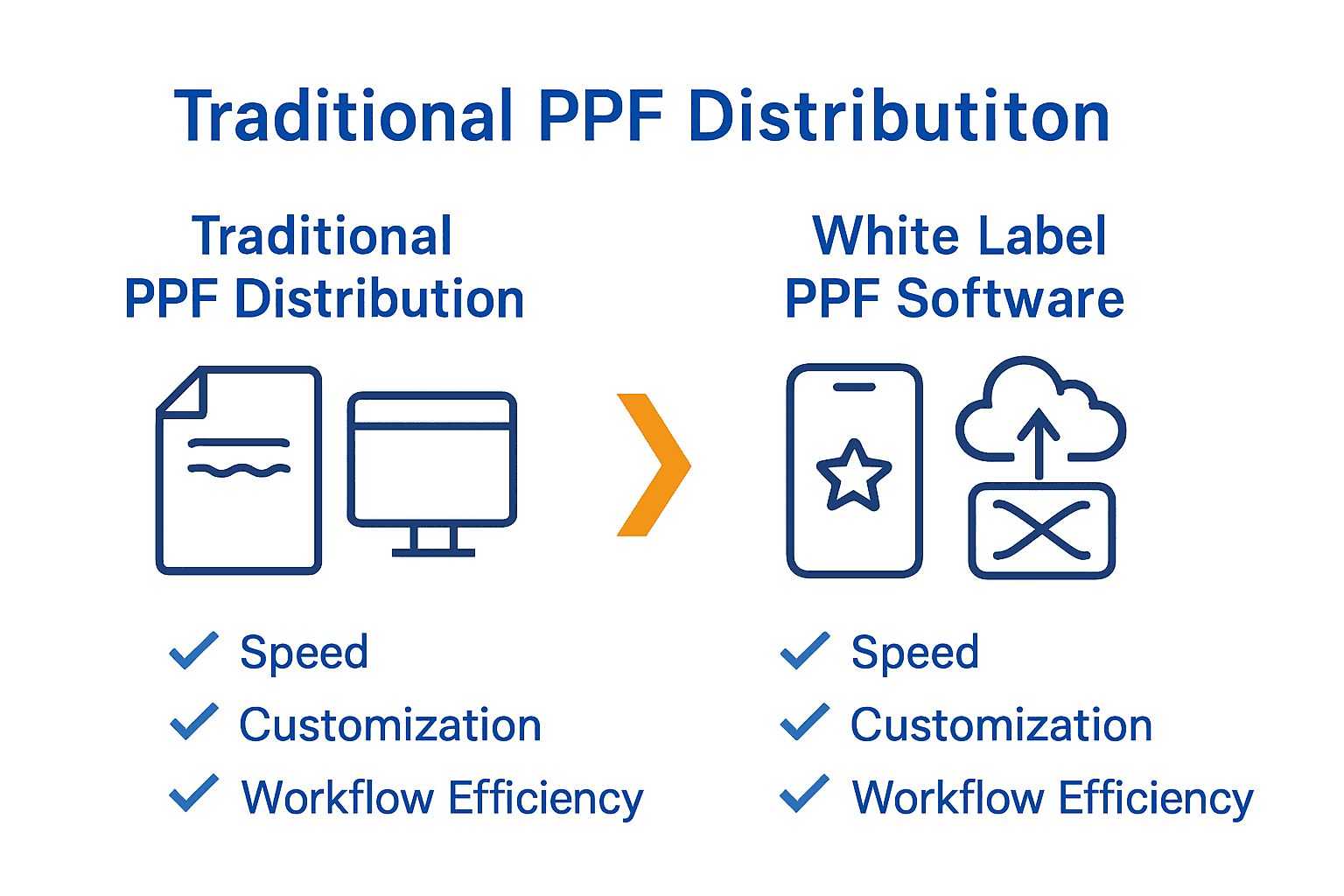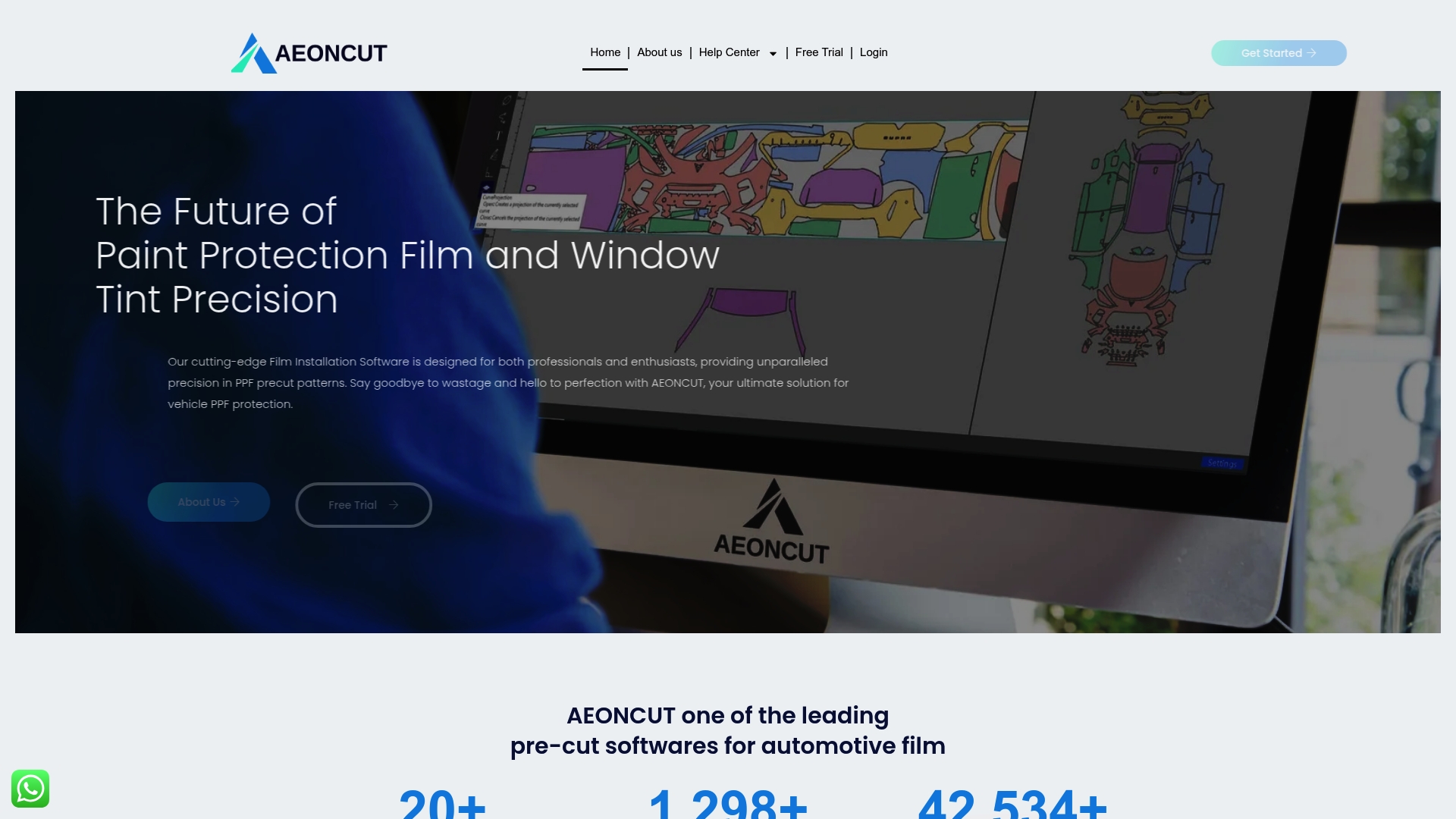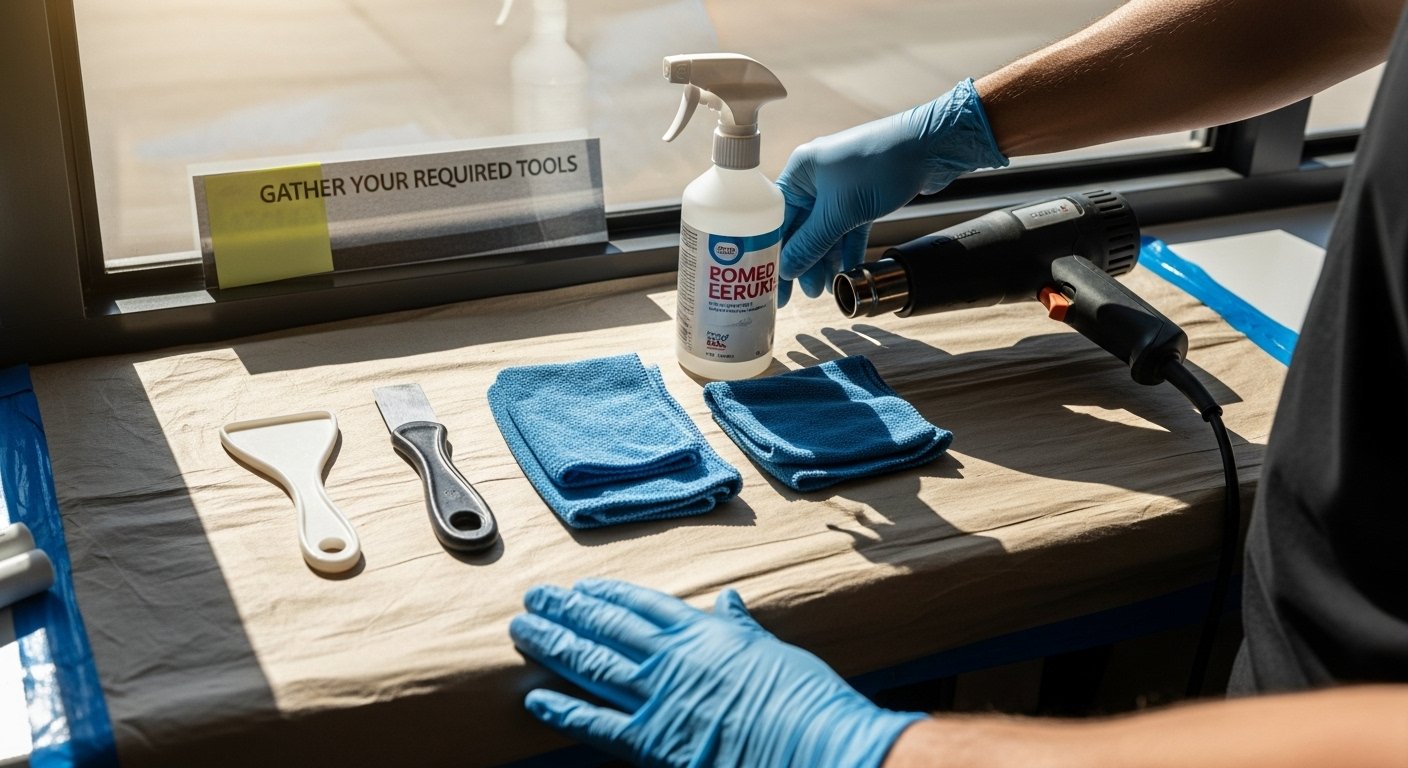
Did you know that over 60 percent of automotive film distributors struggle with software that does not fit their workflow? Finding the right white label PPF software can make or break efficiency for these businesses. By understanding key distributor needs, from custom pattern cutting to real time integration, you can create solutions that transform everyday operations and deliver true professional value.
Quick Summary
| Key Point | Explanation |
|---|---|
| 1. Assess Distributor Needs Thoroughly | Conduct detailed interviews to understand specific requirements and challenges faced by distributors in the automotive protection film industry. |
| 2. Focus on Custom Branding Elements | Gather branding assets like logos and color schemes to create a cohesive brand experience in the software. |
| 3. Integrate Comprehensive Pattern Libraries | Develop extensive vehicle pattern databases and customizable templates to enhance the software functionality for distributors. |
| 4. Implement Robust Launch Strategies | Plan a phased software launch with thorough training and support to facilitate quick adoption by distributors. |
| 5. Establish Continuous Feedback Mechanisms | Create multiple channels for collecting distributor feedback to inform ongoing improvements and ensure software relevance. |
Table of Contents
- Step 1: Assess Distributor Needs For White Label PPF Software
- Step 2: Set Up White Label Branding And Initial Configurations
- Step 3: Integrate Pattern Libraries And Essential Features
- Step 4: Launch Software To Partners And Clients
- Step 5: Verify Software Performance And Gather Feedback
Step 1: Assess Distributor Needs for White Label PPF Software
Successfully identifying the right white label PPF software requires a strategic approach to understanding your distributors specific requirements and operational workflows. This step will help you create a targeted software solution that truly meets their professional needs.
Start by conducting comprehensive interviews with potential distributors in the automotive protection film industry. Your goal is to uncover their current pain points and technological challenges. Ask specific questions about their existing workflows such as pattern cutting methods, inventory management, and customer interaction processes.
Key areas to explore during your assessment include:
Here’s a summary comparison of the critical needs to assess for PPF software distributors:
| Assessment Area | Why It Matters | Typical Distributor Requirements |
|---|---|---|
| Software Integration | Ensures compatibility with existing systems | API support Platform sync |
| Pattern Cutting | Delivers accuracy in film application | Precise templates Customisable patterns |
| Installation Volume | Determines software scalability | Monthly usage stats Resource allocation |
| Team Expertise | Affects ease of software adoption | Simple UI Training resources |
| Budget | Impacts procurement decision | Tiered pricing Flexible licences |
- Current software systems and integration capabilities
- Specific pattern cutting requirements
- Volume of vehicle wrap and PPF installations per month
- Level of technical expertise among installation teams
- Budget constraints for software adoption
According to digital platform research, successful white label solutions prioritize features like real time portfolio management and seamless digital onboarding. For PPF distributors, this translates to software that provides precise pattern libraries, cloud based updates, and comprehensive support systems.
Pro Tip: Document each distributor’s unique requirements meticulously. The more granular your understanding, the more targeted your white label software solution will be.
By systematically mapping out distributor needs, you will create a software solution that not only meets but anticipates their professional requirements. Your next step involves translating these insights into specific software design parameters that align with distributor expectations.
Read our guide on building a PPF business to gain deeper insights into industry-specific technological needs.
Step 2: Set Up White Label Branding and Initial Configurations
Transforming your PPF software into a powerful white label solution requires meticulous attention to branding and configuration details. This step will guide you through creating a seamless branded experience that reflects your distributor’s unique business identity.
Begin by gathering comprehensive branding assets from your distributor. According to Finestel’s white label guide, this typically includes high resolution logo files, preferred color palette, and specific design guidelines that capture their brand essence.
Key configuration elements to establish include:
- Custom logo placement across software interfaces
- Color scheme customization
- Domain name setup
- User interface theme selection
- Initial dashboard configuration
Research from MFEcosystem’s white label solutions highlights the importance of creating comprehensive branded experiences. For PPF distribution software, this means developing a cohesive visual identity that extends beyond simple logo placement to include consistent color schemes, typography, and interactive design elements.
Pro Tip: Create a comprehensive branding template that allows flexibility while maintaining core design consistency across different software modules.
Pay special attention to technical integration points. Ensure that your white label solution allows distributors to seamlessly incorporate their brand identity without compromising software functionality. This includes configurable login screens, custom reporting templates, and personalized user experience touchpoints.
By meticulously setting up these initial configurations, you will create a white label PPF software solution that feels native to each distributor’s brand.
 Your next step involves testing and validating the branding implementation to ensure a polished professional appearance.
Your next step involves testing and validating the branding implementation to ensure a polished professional appearance.
Check out our Private Label PPF Software guide for additional insights into creating compelling white label solutions.
Step 3: Integrate Pattern Libraries and Essential Features
Successfully integrating robust pattern libraries and essential features transforms your white label PPF software from a basic tool to a comprehensive solution for automotive protection film distributors. This step will help you build a feature rich platform that meets diverse professional requirements.
According to Wishloop’s white label platform insights, customizable template libraries form the core of an effective software solution. For PPF distributors, this means creating an extensive pattern library that covers multiple vehicle makes, models, and installation scenarios.
Essential features to integrate include:
- Comprehensive vehicle pattern database
- Auto nesting capabilities for material optimization
- Real time measurement and calculation tools
- Cloud based pattern synchronization
- Customizable installation template systems
Research from JezzMoney’s distributor software analysis emphasizes the importance of advanced calculators and simulation tools. In the PPF context, this translates to precise measurement algorithms, material usage predictors, and interactive design interfaces that streamline the installation process.
Pro Tip: Develop a modular feature system that allows distributors to activate or customize tools based on their specific operational needs.
Prioritize seamless integration and user experience. Your pattern libraries should not just contain static templates but offer intelligent, adaptable solutions that can be quickly modified to suit unique vehicle specifications. Consider implementing AI driven pattern recognition and auto adjustment features.
By carefully curating and integrating these pattern libraries and features, you will create a white label PPF software solution that provides genuine value to distributors.
Your next step involves testing these integrated features to ensure reliability and performance.
Learn more about cutting edge PPF software capabilities in our Best PPF Software guide.
Step 4: Launch Software to Partners and Clients
Launching your white label PPF software represents the culmination of your strategic development process. This critical stage transforms your carefully crafted solution from a concept into a functional tool that distributors will actively use in their professional workflows.
According to Finestel’s white label implementation guide, successful software launches can happen remarkably quickly. Their research suggests that with proper preparation, you can activate and deploy your platform within a weekend accelerating your time to market.
Prepare for launch by developing a comprehensive rollout strategy that includes:
- Staged deployment approach
- Initial partner onboarding training
- Technical support readiness
- Performance monitoring systems
- Feedback collection mechanisms
MFEcosystem’s white label solutions recommends launch timelines between 7 to 15 working days for custom branded applications. This realistic window allows sufficient time for final configuration and partner communication.
Pro Tip: Create a phased launch strategy starting with your most technically adept partners who can provide rapid and constructive feedback.
Focus on creating a smooth onboarding experience. Develop comprehensive documentation, video tutorials, and live training sessions that help your distributors quickly understand and leverage the software capabilities. Consider hosting webinars or interactive training workshops to facilitate quick adoption.
Ensure your technical support team is fully prepared to handle initial queries and provide immediate assistance.
 Quick response times during the initial launch phase will build confidence and trust among your first wave of partners.
Quick response times during the initial launch phase will build confidence and trust among your first wave of partners.
By methodically executing your launch strategy, you will successfully introduce your white label PPF software to the market. Your next step involves gathering initial feedback and iterating on the platform based on real world usage insights.
Learn more about building successful PPF businesses in our PPF business guide.
Step 5: Verify Software Performance and Gather Feedback
Validating your white label PPF software performance is a critical phase that determines long term success and continuous improvement. This step focuses on systematically collecting insights and measuring the actual operational effectiveness of your solution.
SPP.co’s white label reseller platform demonstrates the importance of creating robust feedback mechanisms that go beyond simple performance tracking. Implementing comprehensive monitoring systems allows you to understand how distributors interact with your software in real world scenarios.
Establish a multifaceted feedback collection strategy that includes:
- Quantitative performance metrics tracking
- Structured user experience surveys
- Direct interview sessions with key distributors
- Technical performance monitoring dashboards
- Automated bug reporting systems
Focus on creating multiple feedback channels that make it easy and convenient for distributors to share their experiences. Develop user friendly survey interfaces, schedule periodic check ins, and create dedicated communication platforms where partners can provide candid insights about the software.
Pro Tip: Design your feedback collection process to be as frictionless as possible by using short surveys, providing incentives, and showing demonstrable action based on previous feedback.
Analyze the collected data systematically. Look for patterns in user experiences, identify potential performance bottlenecks, and prioritize improvements that address the most critical distributor needs. Your goal is to transform raw feedback into actionable development strategies.
Implement a continuous improvement cycle where each feedback round leads to tangible software enhancements. This approach demonstrates your commitment to meeting distributor requirements and builds long term trust in your white label solution.
By rigorously verifying software performance and actively gathering distributor insights, you will create an adaptive and responsive PPF software platform. Your next step involves translating these insights into meaningful product updates.
Explore more about creating cutting edge software solutions in our Best PPF Software guide.
Unlock a New Era of Efficiency with White Label PPF Solutions
Struggling to meet the fast-changing demands of automotive PPF distributors? If your business faces issues like the need for accurate pattern libraries, seamless white label branding, and scalable software that truly fits your workflows, it is time to discover how modern tools eliminate these challenges. Our PPF software speaks directly to the core needs highlighted in this article, including rapid integration, custom branded interfaces, and advanced AI-driven features that minimise waste and boost precision. If you have ever worried that your current solution is holding you back or making it hard to deliver a professional experience to your clients, AEONCUT is built to put you ahead.

Take control of your distribution future and elevate your operations without delay. Visit aeoncutsw.com now or see more of our Paint Protection Film resources to see how your team can benefit from unlimited pattern access, industry-leading cloud updates, and tailored support. Act now to position yourself as a leader with the PPF industry’s top white label solutions.
Frequently Asked Questions
What is white label PPF software, and how can it benefit my distribution business?
White label PPF software allows you to brand a pre-developed software solution as your own, providing essential tools for automotive protection film distribution. It can streamline your operations, improve workflow efficiency, and enhance your customer service. To maximize benefits, assess your distributors’ specific needs to select appropriate features, like installation templates and pattern libraries.
How do I assess the specific needs of my distributors for white label PPF software?
Begin by conducting interviews with distributors to identify their pain points and operational workflows. Focus on areas such as pattern cutting methods, installation volumes, and current software systems, and document their responses to tailor the software effectively.
What essential features should I integrate into my white label PPF software?
Integrate features like a comprehensive vehicle pattern database, customizable installation templates, and real-time measurement tools. Make a list of the most critical features requested by your distributors and aim to implement them, measuring progress within development phases.
How can I successfully launch the white label PPF software to my partners?
Prepare a comprehensive rollout strategy that includes step-by-step deployment, partner onboarding training, and technical support readiness. Launching with a phased approach, starting with your tech-savvy partners, can help gather immediate feedback and refine the software quickly.
What metrics should I track to verify the performance of my white label PPF software?
Track quantitative performance metrics such as user engagement levels and the frequency of software tool usage. Set up dashboards to monitor this data consistently, allowing for quick identification and resolution of any issues within your solution.
How can I gather actionable feedback from my distributors after launching the software?
Implement a structured feedback collection strategy that includes surveys, direct interviews, and performance monitoring tools. Encourage open communication and provide incentives for taking part; consider conducting feedback sessions at regular intervals, such as every quarter.
Recommended
- Building a PPF Business in 2025: From Tools to First Clients – AEONCUT PPF Pre-cut Cutting software
- PPF Cutting Software: Essential Guide for Installers 2025 – AEONCUT PPF Pre-cut Cutting software
- Top PPF Brands in 2025: A Professional’s Buying Guide – AEONCUT PPF Pre-cut Cutting software
- Building a PPF Business in 2025: From Tools to First Clients – AEONCUT PPF Pre-cut Cutting software



